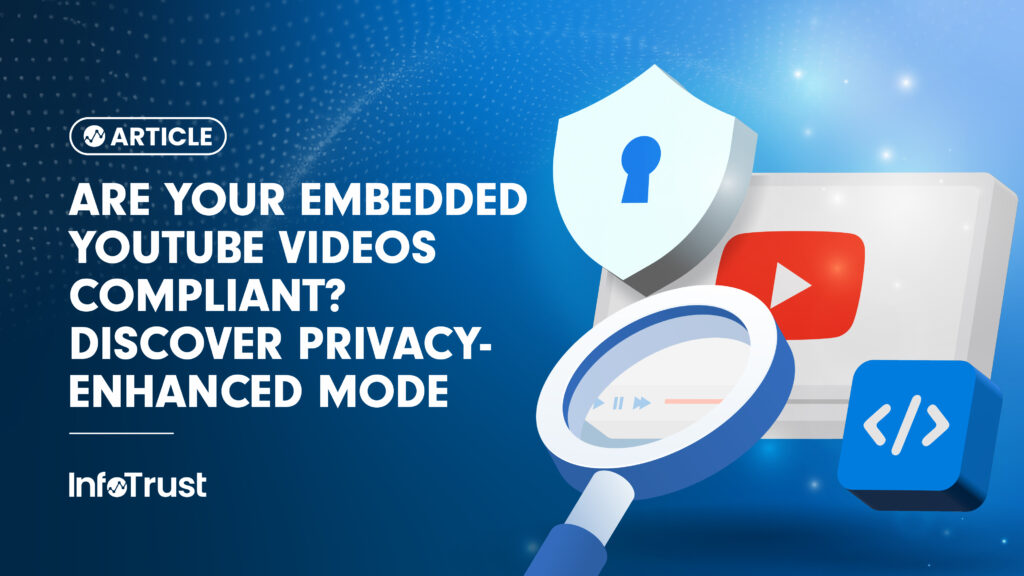Important Disclaimer: We are not legal professionals. The information provided here is for educational purposes only and should not be considered legal advice. It’s essential to consult with your legal team to ensure your website’s compliance with all applicable privacy regulations.
In today’s digital landscape, video has become the preferred medium for sharing information and news. Websites that prioritize engaging content understand the vital role video plays in connecting with their audience. They engage visitors, explain complex concepts, and boost overall user experience. And when it comes to delivering that experience, YouTube stands out as the industry leader. Its ease of use, robust features, and seamless integration with analytics tools like Google Analytics (GA4) and GTM make it a popular choice.
However, in today’s privacy-conscious world, embedding standard YouTube videos can pose significant compliance challenges, particularly with regulations like GDPR.
The GDPR Dilemma: YouTube’s Standard Embeds and Tracking
Embedding a standard YouTube video triggers the setting of third-party cookies. These cookies, often associated with DoubleClick and other marketing tags, enable extensive visitor tracking, even if a user hasn’t explicitly consented
How Does This Happen?
- The standard YouTube iframe loads cookies, which then loads third-party marketing tags, also known as piggybacking.
- These third-party tags like DoubleClick gather data to personalize user experiences and deliver targeted advertising.
- This data collection occurs regardless of user consent, which violates GDPR principles.
The Solution: YouTube’s Privacy-Enhanced Mode
Recognizing these concerns, Google introduced the “Privacy-Enhanced Mode” for embedded YouTube players. This mode aims to mitigate privacy risks by:
- Preventing Personalized YouTube Experiences:
- By no longer loading marketing tags like DoubleClick, views from privacy-enhanced embeds won’t influence a user’s YouTube browsing experience or personalize their YouTube viewing.
- Non-Personalized Ads:
- If ads are shown within a privacy-enhanced embed, they will be non-personalized.
- No Cross-Site Tracking:
- Video views won’t be used to personalize ads outside your website or app.
Privacy Enhanced AKA: Youtube “No Cookie” Myth
It’s crucial to understand that “Privacy-Enhanced Mode” isn’t a “no-cookie” solution. While it significantly reduces tracking, it still relies on essential functional cookies for proper playback. However, Google states that data is not used for advertising purposes in this mode. In the EU market, setting cookies without consent is not allowed unless they are needed for the function of the page, which these cookies appear to be.
How to Implement YouTube’s Privacy-Enhanced Mode
Implementing this mode is straightforward. When embedding a YouTube video, simply replace www.youtube.com in the embed URL with www.youtube-nocookie.com.
Example:
- Standard Embed URL: https://www.youtube.com/embed/VIDEO_ID
- Privacy-Enhanced Embed URL: https://www.youtube-nocookie.com/embed/VIDEO_ID
By switching to the Privacy-Enhanced Mode, you can take a significant step towards ensuring your embedded YouTube videos align with modern privacy standards.
In a world where user privacy is paramount, understanding and implementing solutions like YouTube’s Privacy-Enhanced Mode is essential. Stay informed, consult your legal counsel, and prioritize user trust.


